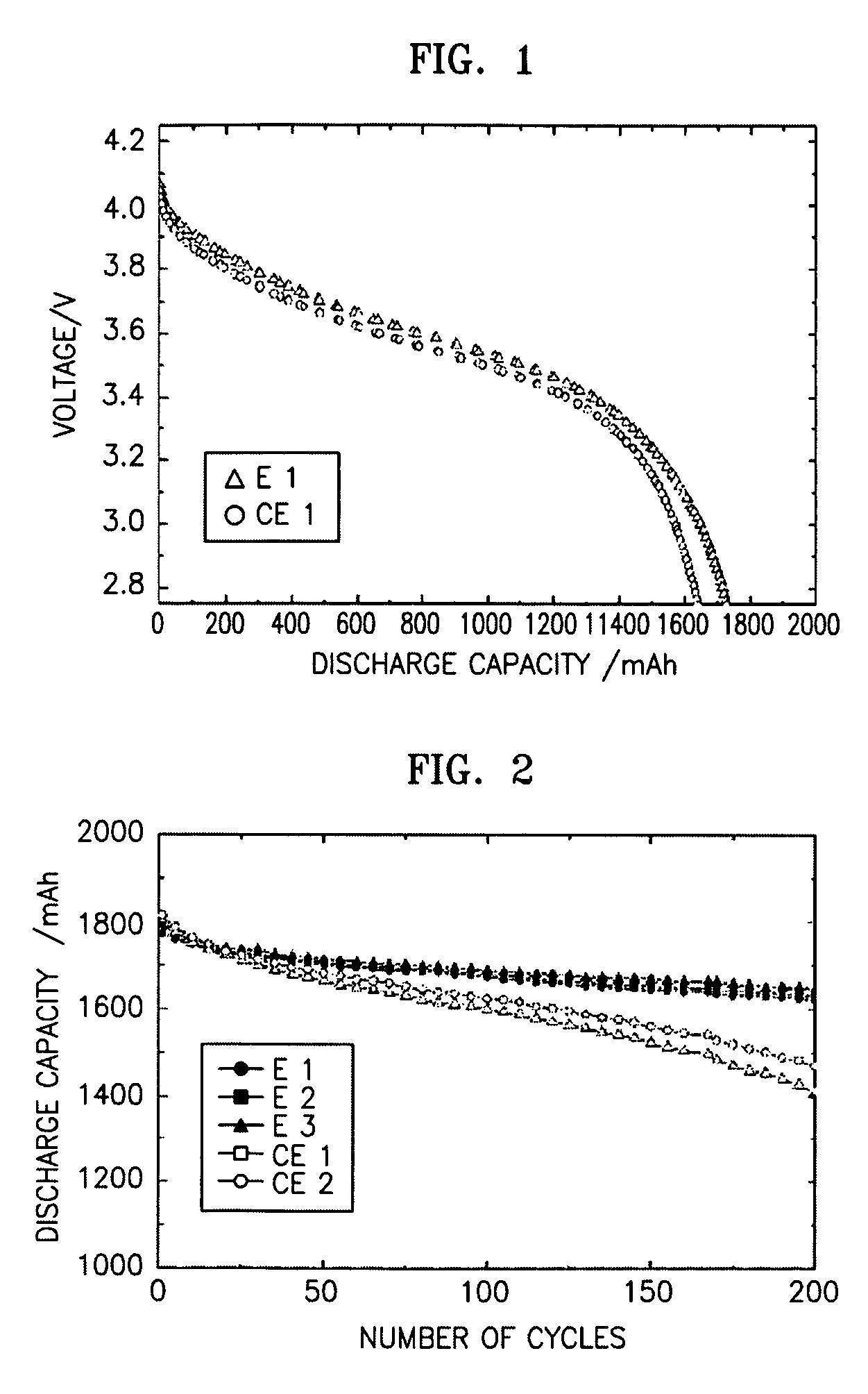Anode composition for lithium battery, and anode and lithium battery using the same
a lithium battery and anode technology, applied in the field of lithium batteries, can solve the problems of reducing the efficiency of current collection, internal short circuit, reducing the charge/discharge efficiency of lithium batteries, etc., and achieve the effect of improving adhesion and improving slurry dispersibility
- Summary
- Abstract
- Description
- Claims
- Application Information
AI Technical Summary
Benefits of technology
Problems solved by technology
Method used
Image
Examples
example 1
[0050]97% by weight of a natural graphite, 1.0% by weight of carboxymethylcellulose (CMC), 1.0% by weight of styrene butadiene rubber (SBR), and 1.0% by weight of poly(methacrylic acid) (Aldrich) were added in water and ball-milled with a ceramic ball for about 10 hours. The mixture was cast with a 300 μm doctor blade onto a copper foil and dried in about 90 μm oven for about 10 hours to obtain an anode plate. The anode plate was roll-pressed and cut into a predetermined size to obtain an anode plate sample with a thickness of 120 μm.
example 2
[0051]An anode plate sample was prepared in the same manner as in Example 1 except that 97% by weight of a natural graphite, 1.0% by weight of CMC, 1.0% by weight of SBR, and 1.0% by weight of poly(acrylic acid)(Aldrich) were added to water.
example 3
[0052]An anode plate sample was prepared in the same manner as in Example 1 except that 95% by weight of a natural graphite, 2.0% by weight of CMC, 2.0% by weight of SBR, and 1.0% by weight of poly(methacrylic acid)(Aldrich) were added to water.
PUM
 Login to View More
Login to View More Abstract
Description
Claims
Application Information
 Login to View More
Login to View More - R&D
- Intellectual Property
- Life Sciences
- Materials
- Tech Scout
- Unparalleled Data Quality
- Higher Quality Content
- 60% Fewer Hallucinations
Browse by: Latest US Patents, China's latest patents, Technical Efficacy Thesaurus, Application Domain, Technology Topic, Popular Technical Reports.
© 2025 PatSnap. All rights reserved.Legal|Privacy policy|Modern Slavery Act Transparency Statement|Sitemap|About US| Contact US: help@patsnap.com

